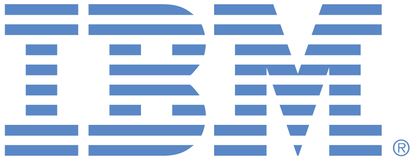
This is an IBM Automation portal for Digital Business Automation products. To view all of your ideas submitted to IBM, create and manage groups of Ideas, or create an idea explicitly set to be either visible by all (public) or visible only to you and IBM (private), use the IBM Unified Ideas Portal (https://ideas.ibm.com).
Shape the future of IBM!
We invite you to shape the future of IBM, including product roadmaps, by submitting ideas that matter to you the most. Here's how it works:
Search existing ideas
Start by searching and reviewing ideas and requests to enhance a product or service. Take a look at ideas others have posted, and add a comment, vote, or subscribe to updates on them if they matter to you. If you can't find what you are looking for,
Post your ideas
Post an idea.
Get feedback from the IBM team and other customers to refine your idea.
Follow the idea through the IBM Ideas process.
Please use the following category to raise ideas for these offerings for all environments (traditional on premises, containers, on cloud):
Cloud Pak for Business Automation - including Business Automation Studio and App Designer, Business Automation Insights
Business Automation Workflow (BAW) - including BAW, Business Process Manager, Workstream Services, Business Performance Center, Advanced Case Management
Content Services - FileNet Content Manager
Content Services - Content Manager OnDemand
Content Services - Daeja Virtual Viewer
Content Services - Navigator
Content Services - Content Collector for Email, Sharepoint, Files
Content Services - Content Collector for SAP
Content Services - Enterprise Records
Content Services - Content Manager (CM8)
Datacap
Automation Document Processing
Automation Decision Services (ADS)
Operational Decision Manager
Robotic Process Automation
Robotic Process Automation with Automation Anywhere
Blueworks Live
Business Automation Manager Open Edition
IBM Process Mining
Specific links you will want to bookmark for future use
Welcome to the IBM Ideas Portal (https://www.ibm.com/ideas) - Use this site to find out additional information and details about the IBM Ideas process and statuses.
IBM Unified Ideas Portal (https://ideas.ibm.com) - Use this site to view all of your ideas, create new ideas for any IBM product, or search for ideas across all of IBM.
ideasibm@us.ibm.com - Use this email to suggest enhancements to the Ideas process or request help from IBM for submitting your Ideas.

Referring to the Task Bulk REST APIs for get data, claim, cancel, see here: https://www.ibm.com/docs/en/baw/22.x?topic=task-put-bulk-claim
We only return the failed task commands in the response as stated here:
Response content
Empty if all claims succeed. For failed individual claims, a report is returned (TaskBulkOperationResponse complexType).
The default content type is application/json.
The caller can lop through the reponse to determine which tasks were successful and which ones were not.
Another use case that I want to share with IBM is one that I believe is applicable to both headless BPM applications and traditional coach BPM applications. There is the case where a user is performing a team distribution role (typically a manager) where a group of process instances would be assigned to a BPM user. This assignment process could be accomplished on an individual basis, however, from a UI it would make sense for the manager user is selecting multiple process instances to distribute across a team. The bulk API would allow for a single REST request per assignee that would be generated. Again, this should be a very common use case that bulk could support if it returned failures.
Attachment (Use case): This attachment provides the set of available actions to state matrix and corresponding state diagram to help explain the interactions we have built within BPM.
The use case is we are trying to follow a 3 step process that uses a ‘Query – Claim – Finish' sequence to lookup the task ID to perform the claim and finish to complete a task and update data values stored in the business object defined to BPM.
If since the task ID is not something we currently track at time of instance creation, we have to perform the query but this step potentially could be taken out of the sequence if start instance returned the task ID of the first human activity.
I am attaching a diagram from IIB that I believe is attached to the RFE as a better visual of what we are doing today exercising the same thing but implemented in a process loop handling bulk requests one at a time.
We are using the headless implementation of BPM so we have written our own UI with microservices that call out to IIB exposed user operations (assign, cancel, complete, unassign) via REST-enabled services. Through the UI, a user takes action on one or more process instance. The “or more” part is what would trigger the bulk scenario. So if a user assigns 10 instances from the UI, that would equate to a process loop of 10 assign requests that ultimately follow the sequence described below. If we had the bulk REST functionality implemented we could make a single call at each step in the sequence so it's still a 3 step process however, it would be only a single iteration regardless whether the user asked for 1 or 100 assign requests. The query, claim, and finish are all done via the REST API to communicate with BPM. Hopefully, this explains things to a level that makes sense.
Attachment (Use case)
Attachment (Use case)